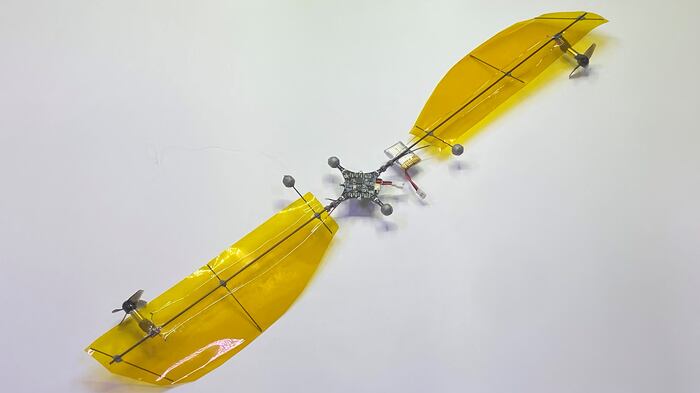Around the summertime, you might often see maple seeds—also known as “helicopter” seeds—twirl and dance in the air before floating to the ground. While they’re fun to play with as a kid, adults are also paying close attention to them and turning to these seeds as design inspiration for—what else—flying drones.
In fact, engineers in China have built a micro-drone that weighs 35 grams (a little less than an egg) and was inspired by maple seeds that they say uses less power than their conventional counterparts. The team published a study of their findings in the journal American Association for the Advancement of Science on Wednesday. It describes how their new bicopter, or two-wing drone, uses less electricity than four-winged drones of a similar weight. This allows it to roughly double its flight time—and could serve as a cost-effective and energy-efficient alternative to bigger, more cumbersome drones. This could mean future drones that can take movie-quality videos or high-definition pictures that weigh less than your pocket change.
“With the adoption of this bicopter configuration, lightweight drones are able to fly longer,” Pakpong Chirarattananon, an associate professor of biomedical engineering at City University of Hong Kong and co-author of the study, told The Daily Beast via email.
He added that the drone’s efficient, lightweight design could even help overcome legal restrictions that regulate the use of larger drones. “We believe the improvement in flight times of lighter robots could accelerate the use of small aerial vehicles in urban settings, even just for recreational purposes such as photography or videography,” he said.
The bicopter’s design draws on two different schools of flight that are brought together in a very clever way. First, there’s the way that helicopters use spinning propellers to create an upward force to fly. Then there’s the way airplanes use propellers to move the plane forward and wings to push incoming air down to create lift. Both have their limitations. Helicopters are much more energy intensive, while traditional airplanes can’t hover.
That’s when the researchers took inspiration from nature to merge the two methods. “When we take a look at falling maple seeds, we notice that their descent is slow and vertical,” Chirarattananon said. “This is because, instead of gliding forward, maple seeds have large wings that rotate in place to generate lift while falling.”
If you can keep it spinning, you can create enough lift for it to fly. Using this idea, the team created a two-winged drone with a small propeller on each wing. The propellers rotate the wings, which then lifts the drone into the air. Since the lift created by the wings is more than the thrust of the propellers, this results in “energy saving or lowered power consumption” when compared to normal quadcopters, Chirarattananon said.
The bicopter isn’t commercially viable yet—so don’t expect to see these spiffy new drones on Amazon anytime soon. However, it’s also a good example of how, sometimes, the most innovative designs in tech can be found amongst the oldest—and most delightful—examples in nature.







